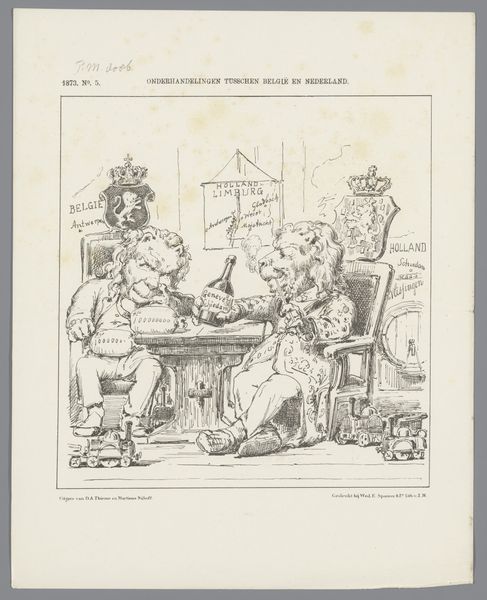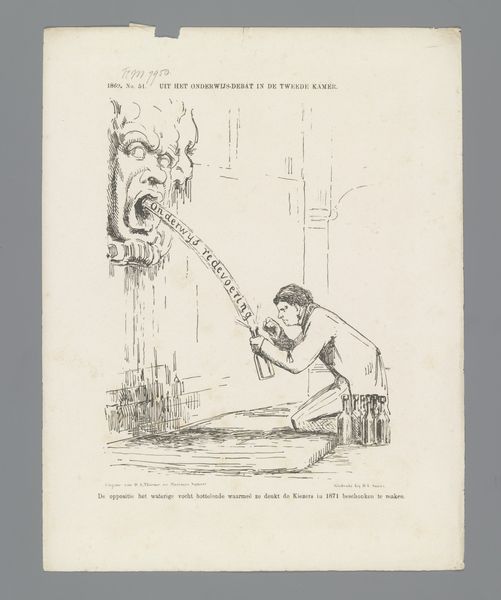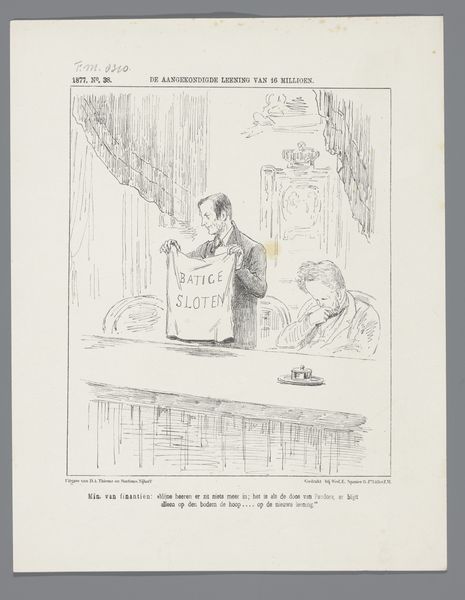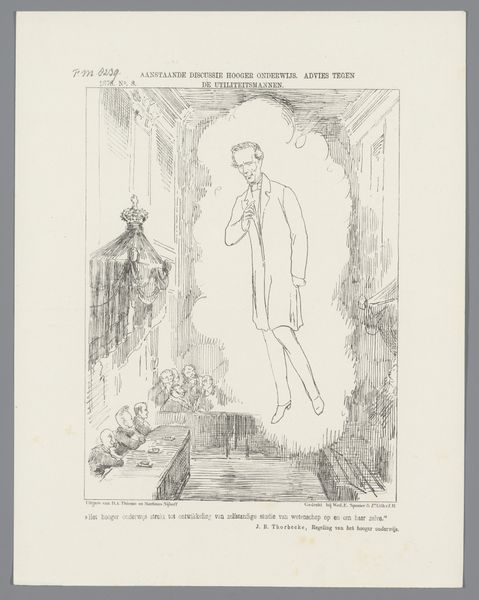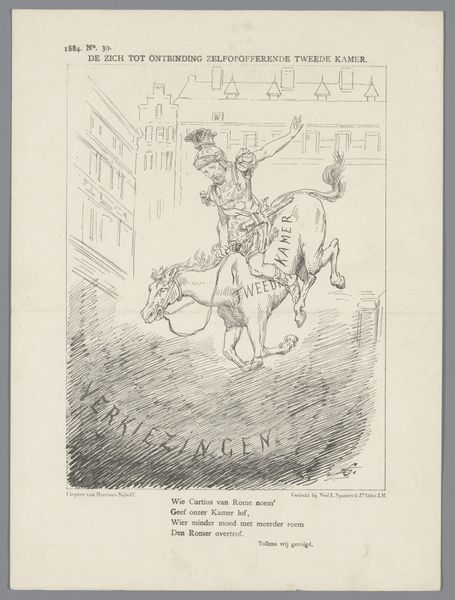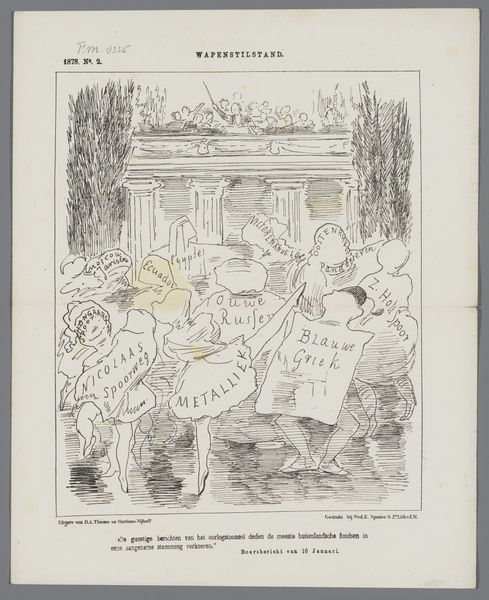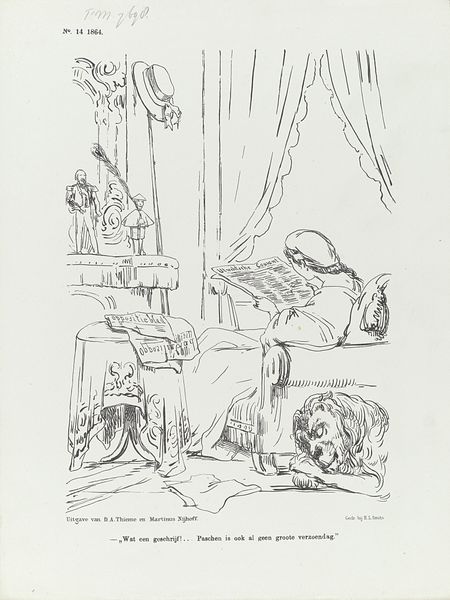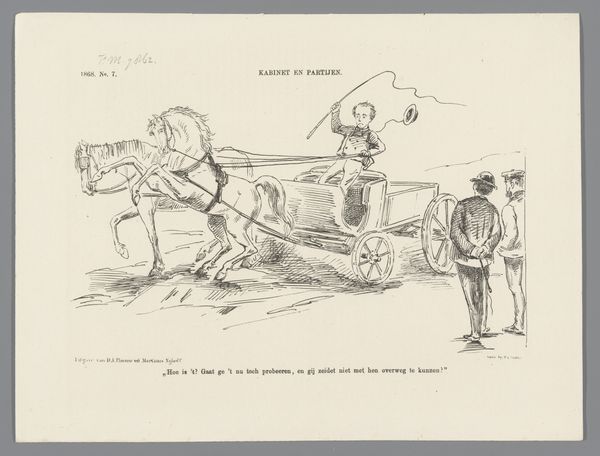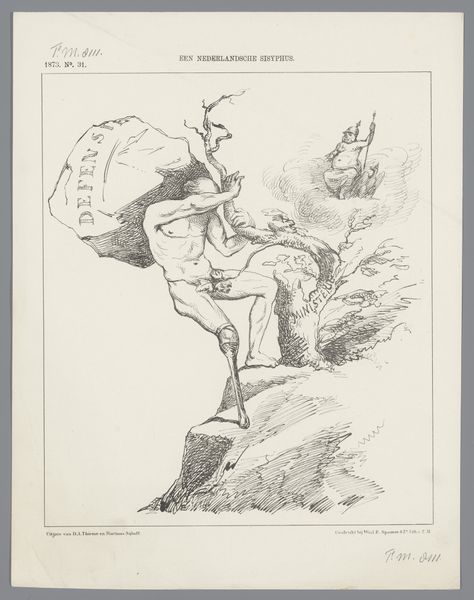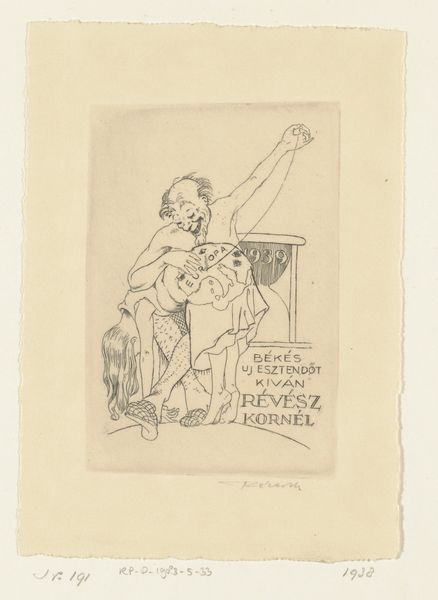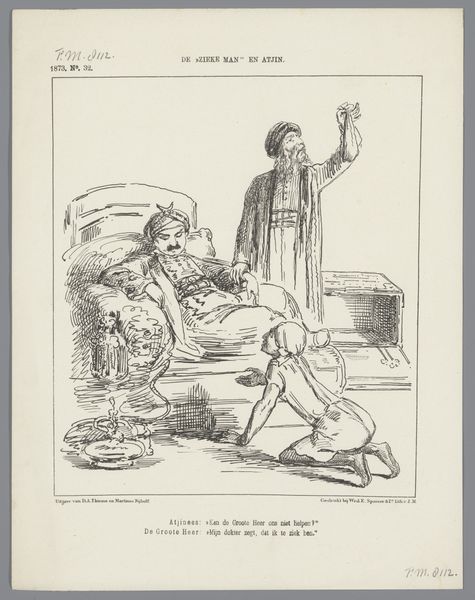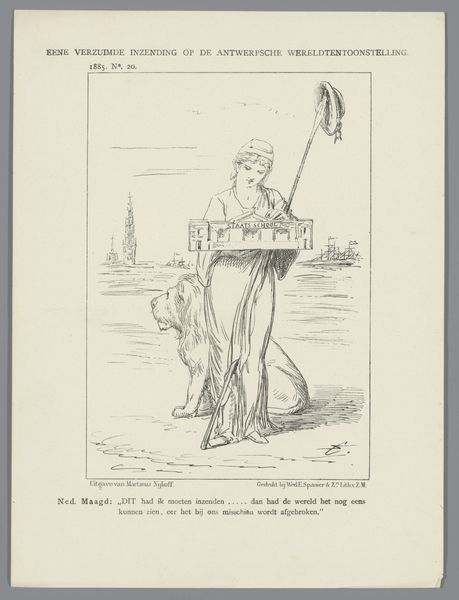
drawing, graphic-art, print, ink, pen
#
drawing
#
graphic-art
#
narrative-art
# print
#
caricature
#
figuration
#
ink
#
pen-ink sketch
#
pen
Dimensions: height 275 mm, width 215 mm
Copyright: Rijks Museum: Open Domain
Curator: Here we have a pen and ink drawing titled "Spotprent over de verwachtingen voor 1885" which translates to “Cartoon about the expectations for 1885,” attributed to Johan Michaël Schmidt Crans. Editor: It's immediately striking. The use of line work creates a kind of frantic energy. The girl pulling the banner appears hesitant but also determined against this chaotic background. Curator: Indeed, the density of lines is quite expressive. The artist utilizes graphic art conventions, specifically through printmaking and drawing, to construct not just an image, but a social commentary. This piece was crafted in a time of political reformations and evolving Liberal ideologies. Editor: Looking at it through the lens of social activism, the banner says, "Liberale Unie" which highlights the expectations or rather, the burdens placed on a certain party. It seems to critique the idealism surrounding this new Union through gendered expectation. Curator: Absolutely, but from a material perspective, let's think about the choices. The accessibility of print meant this critique could be widely distributed and consumed by various social classes, creating discussion in public spaces, from the household, or places of commerce. Editor: Yes, the dissemination of images allowed the critiques to quickly influence public perception, and using visual language helped in bridging literacy divides. Even the pen itself can signify authority, questioning its relationship to popular ideas. Curator: The way the lines overlap and obscure suggest uncertainty and struggle. Considering this image and its production, we see it wasn't just about aesthetic presentation, but a vital medium to create cultural perceptions, through readily available supplies. Editor: Which in turn influences future artistic practice and can become a catalyst for activism! I wonder, did women involved in politics feel equally represented by "Liberale Unie," or if they felt like expectations like these were empty words? The cartoon makes you think of how some figures stay cemented in our collective consciousness versus the voices unheard in popular art and in socio-political reforms. Curator: It presents many questions that can engage modern eyes into considering political art as a crafted form of communication that depends upon materiality to disseminate messages for widespread audience perception and discussion. Editor: A great insight into the relationship between artistic creation and socio-political climate. The cartoon offers valuable lessons.
Comments
No comments
Be the first to comment and join the conversation on the ultimate creative platform.
